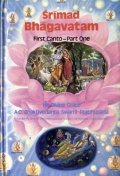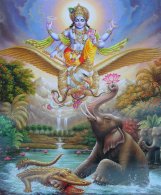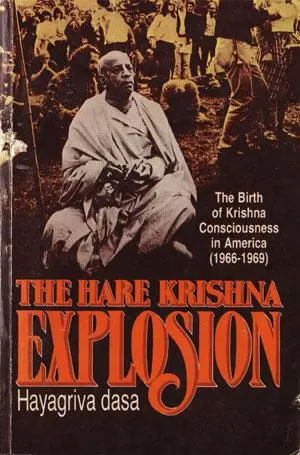
This is an old photo taken in 1907 that my wife found on Facebook. I remember as a kid, thinking that’s what yogis do. Sit on a bed of nails, or levitate off the ground while meditating.
Before Srila Prabhupada came to the West, bringing with him the Vedic Philosophy, not many people had any idea of what was Yoga or Meditation. Or that there were different types of Yoga and Meditation.
We share with you an excerpt from the small paperback book by His Divine Grace A. C. Bhaktivedanta Swmai Prabhupada entitled ” The Perfection of Yoga ”
The yogī obviously has to go through a great deal of difficulty to purify the ātmā (mind, body and soul), but it is a fact that this can be done most effectively in this age simply by the chanting of Hare Kṛṣṇa, Hare Kṛṣṇa, Kṛṣṇa Kṛṣṇa, Hare Hare/ Hare Rāma, Hare Rāma, Rāma Rāma, Hare Hare. Why is this? Because this transcendental sound vibration is nondifferent from Kṛṣṇa. When we chant His name with devotion, then Kṛṣṇa is with us, and when Kṛṣṇa is with us, then what is the possibility of remaining impure? Consequently, one absorbed in Kṛṣṇa consciousness, in chanting the names of Kṛṣṇa and serving Him always, receives the benefit of the highest form of yoga. The advantage is that he doesn’t have to take all the trouble of the meditational process. That is the beauty of Kṛṣṇa consciousness.
In yoga it is necessary to control all of the senses, and when all the senses are controlled, the mind must be engaged in thinking of Viṣṇu. One becomes peaceful after thus conquering material life.
jitātmanaḥ praśāntasya
paramātmā samāhitaḥ
“for one who has conquered the mind, the Supersoul is already reached, for he has attained tranquillity.” ( Bg. 6.7)
This material world has been likened to a great forest fire. As in the forest, fire may automatically take place, so in this material world, although we may try to live peacefully, there is always a great conflagration. It is not possible to live in peace anywhere in the material world. But for one who is transcendentally situated—either by the meditational yoga system or by the empirical philosophical method or by bhakti-yoga—peace is possible. All forms of yoga are meant for transcendental life, but the method of chanting is especially effective in this age. Kīrtana may go on for hours, and one may not feel tired, but it is difficult to sit in lotus position perfectly still for more than a few minutes. Yet regardless of the process, once the fire of material life is extinguished, one does not simply experience what is called impersonal void. Rather, as Kṛṣṇa tells Arjuna, one enters into the supreme abode.
yuñjann evaṁ sadātmānaṁ
yogī niyata-mānasaḥ
śāntiṁ nirvāṇa-paramāṁ
mat-saṁsthām adhigacchati
“By meditating in this manner, always controlling the body, mind and activities, the mystic transcendentalist attains to the kingdom of God through cessation of material existence.” (Bg. 6.15)
More



















